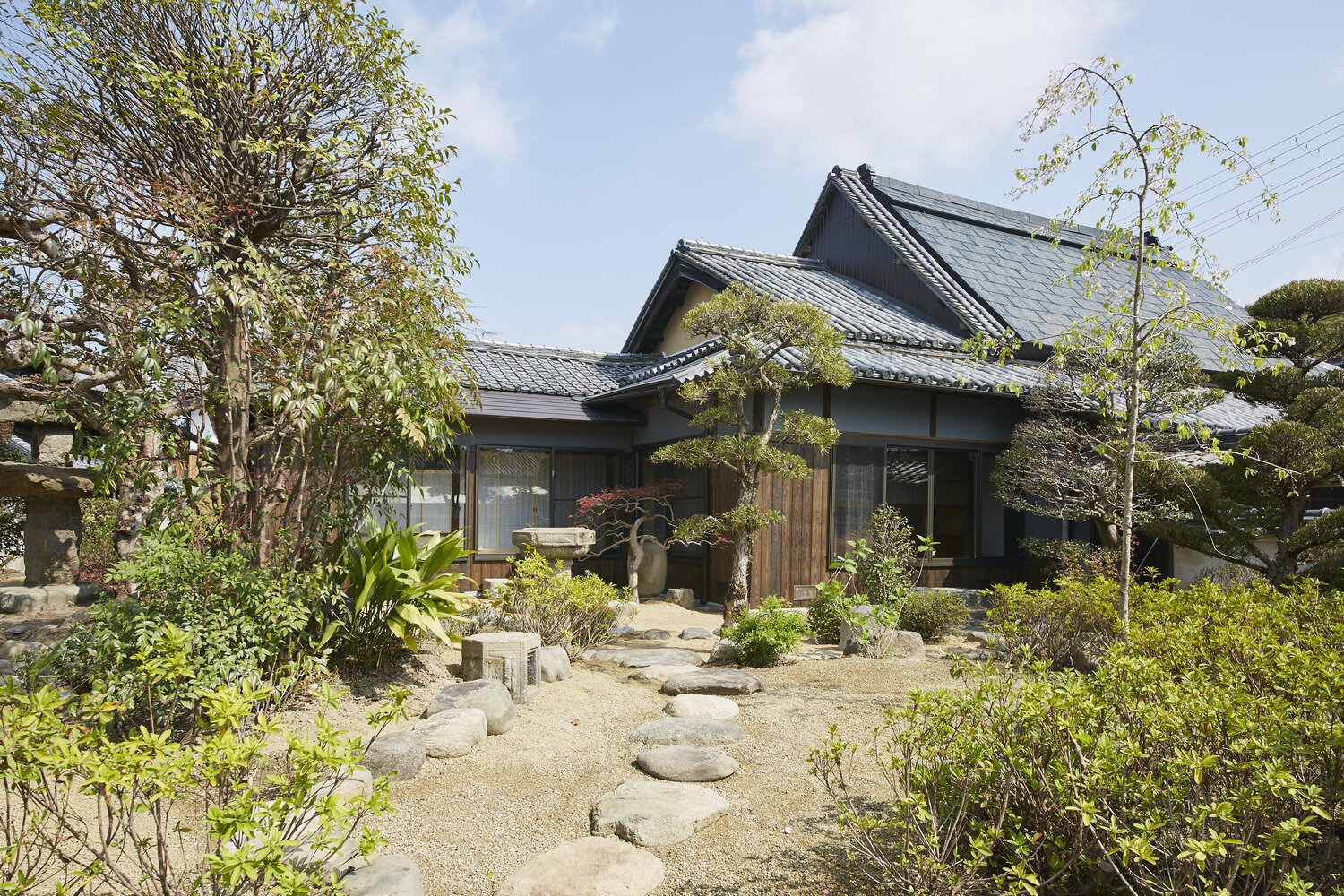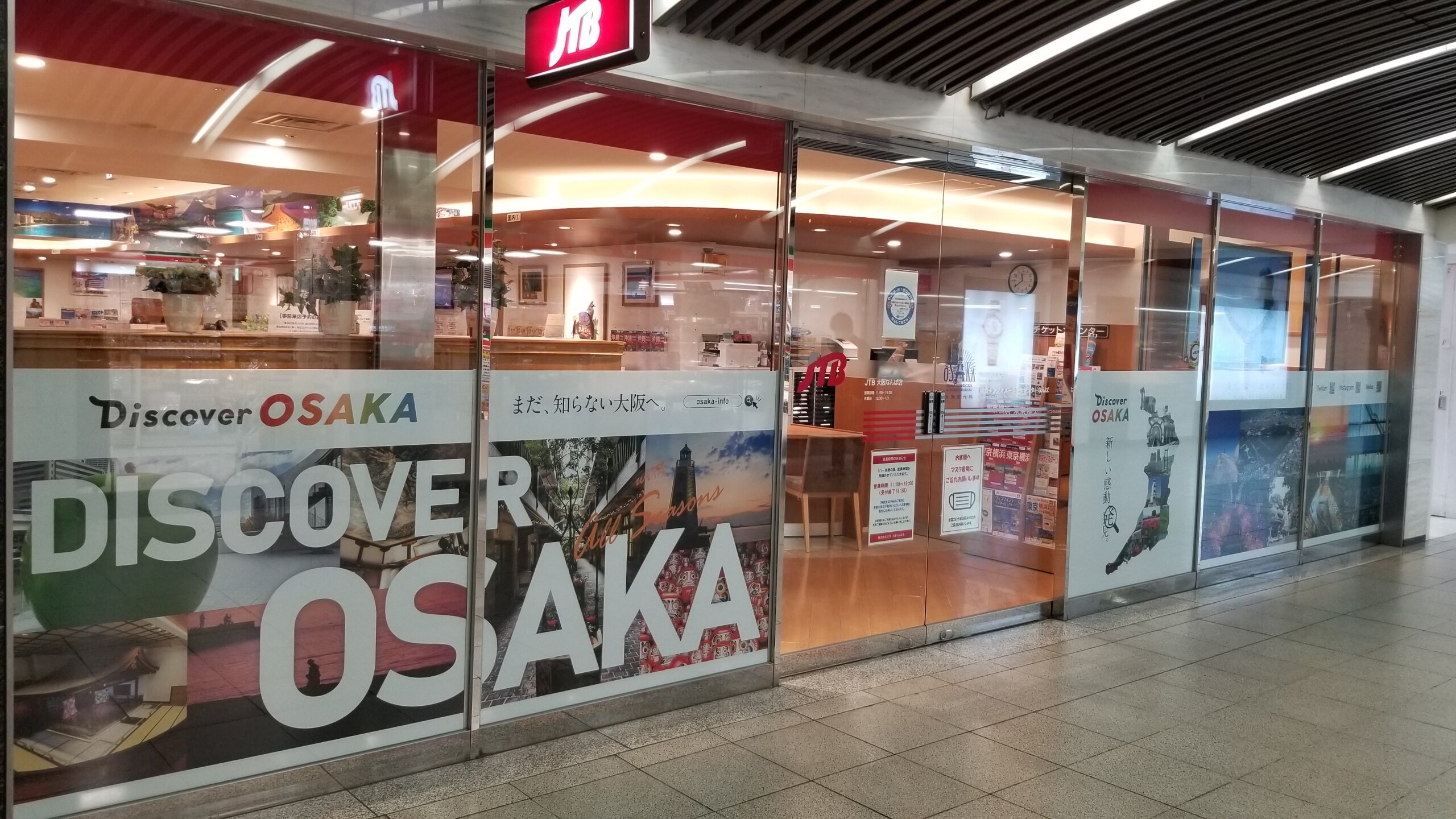
Retro Buildings Stroll
The Yodoyabashi-Kitahama-Senba area is the center of the commercial city of Osaka, both in the past and now. When you suddenly stop in the midst of the bustle of businessmen coming and going, you'll find beautiful buildings quietly ticking away. This was the most cutting-edge architecture of the Meiji, Taisho, and early Showa eras, when famous Osaka merchants invested their fortunes to build this building. A stately and decorative exterior, an atrium lobby, stained glass, etc. Let's walk through the entire city of art museums, which are still innovative and distinctive.
-
START
Osaka Metro Kitahama Station
-
3minutes WalkKoraibashi Nomura Building

First, go a few minutes south of Kitahama Station. The dynamic building that stands on the corner of Sakaisuji Street is the Oriental Art Deco-style Koraibashi Nomura Building. It was designed in 1927 by Takeo Yasui, who also designed the Osaka Club. It is a building made of steel and reinforced concrete, which was rare at the time, and the independent pillar beside the entrance has a unique decoration with a white crescent moon and bamboo motifs, and the floor of the entrance is designed with a dial of the Chinese zodiac and black and white stripes.
3minutes Walk -
Former Konishi family residence

Doshomachi, located south of the Nomura Building, flourished as a drug town since the Edo period. This area, also known as Kitasemba, used to be lined with wooden shops, but the air raids of World War II completely changed the townscape, and now it is lined with modern buildings such as those of major pharmaceutical companies. Meanwhile, the former Konishi family residence stands facing Sakaisuji and exudes the atmosphere of the old Senba area. The building was built in 1903 and is the former store and office of Konishi Gisuke Shoten (currently Konishi Co., Ltd.), a drug dealer founded in 1874. In April 2001, it was designated as a national important cultural property. There are rooms with elaborate designs, a tea room, and a stove that can cook meals for 50 people, including the family and employees. I want to remember the good old Senba. (However, the inside is not open to the public)
see spot3minutes Walk -
Ikoma Building

A stately exterior overlooking the people and cars passing by. The Ikoma Building, completed in 1930, was a building in which Ikoma Watch Store Co., Ltd. invested a huge amount of 150,000 yen in the money at the time. It is a famous Art Deco style building designed by Soheizo. The vertical bay window that extends from the 5th floor to the 3rd floor and the round window on the 2nd floor are designed to resemble a clock pendulum. The hotel is full of sophisticated designs throughout, such as the granite eagle sculpture above the entrance and on the windows, the Italian marble staircase inside the entrance, and the stained glass from the early Showa era, and you can feel the spirit of the management at the time. Currently used as a rental office, it was designated as a registered tangible cultural property by the Agency for Cultural Affairs in 1997. In 2004, it was designated as a ``designated landscape formation'' by Osaka City.
see spot5minutes on foot -
Cotton industry hall

A little south of Ikoma Building, this elegant building stands in the middle of a city packed with textile-related companies. It was built in 1931, when Osaka's textile industry was booming, and was designed by Watanabe Setsuko. Opening the heavy front door, the interior is gorgeous. The entrance hall, which has welcomed the League of Nations Manchurian Incident Investigation Team led by Lord Lytton, as well as VIPs from various countries at international conferences, is in the Italian Renaissance style with a chandelier. The building has a refined and calm atmosphere, with a lounge with a vaulted ceiling, a VIP room with graceful curves in the ceiling and furniture, and a conference room with marble floors containing ammonite fossils. It is a facility exclusively for members of the Japan Cotton Club (with about 800 members), which was established in 1928, but individuals can also tour the building once a month (from 2:30 pm on the fourth Saturday) if they make a reservation in advance. Feel the breath of the past.
see spotAbout 5 minutes walk -
Senba Building

In 1925, the Senba Building attracted attention as a unique building that had both offices and residences. An open courtyard spreads out in the center, and due to the location of Senba, a slope was built to allow trucks and wagons to enter and exit from the entrance, making it an excellent design and functionality. The rooms on each floor, with entrances facing the courtyard, house many offices and studios. The English garden on the rooftop is an urban oasis filled with 250 types of trees and flowers. (Please inquire regarding open period).
see spotA short walk -
Naniwa Church

Sankyu-hashi-suji, which runs north-south between Midosuji and Sakaisuji, is different from the well-known boulevards.It is a comfortable road with just the right width, trees, famous buildings, and new cafes dotted around it. Facing that road is the Shewada Koraibashi main store, and next door to the south is Naniwa Church. It was designed by William M. Vories, an American architect who came to Japan in 1908. Vories, who also worked on the construction of Daimaru Shinsaibashi store, made Omihachiman, Shiga Prefecture his final home, and devoted himself to social contribution activities such as Christian evangelism, medical care, and school education. It is a beautiful space that will refresh your soul, with Gothic-style spire windows and beautiful stained glass.
see spot7minutes Walk -
Osaka Gas Building

The so-called Gas Building, which stands on the west side of Midosuji, was designed by Takeo Yasui, just like the Nomura Building. It was completed in 1930. The modernist architecture, with its beautiful contrast between the black granite lower floors and the milky white tiles, and the impressive curved corners, has an overwhelming presence while blending into the city. As it is the headquarters of a gas company, there is an exhibition/demonstration space and a hall on the first floor, but the most popular is the gas building cafeteria on the 8th floor. At the same time as the building opened, it opened as a pioneering Western cuisine restaurant. Although it was renovated in 2000, the retro atmosphere from when it was first built is still intact, and the bar counter remains the same. Let's soak in the afterglow of touring the city while savoring your taste buds as if you were an old-fashioned businessman.
- GOAL!
Additional Information
- Taste spot
- Gas Building Restaurant Enjoy beef curry at a restaurant with a spectacular view.
- souvenir
- Confectionery master Kikuya's proud warbler mochi.










